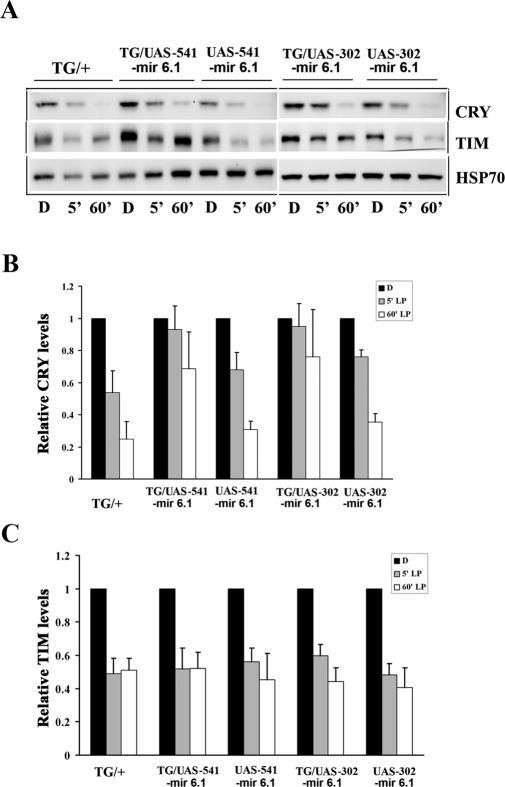Figure 5.
CG17735 regulates light-dependent CRY degradation. (A) Western blot analysis showing the effects of mir 6.1-CG17735 on light-dependent CRY and TIM degradation. Two independent UAS-mir 6.1 CG17735 constructs (541 and 302) were expressed in clock cells using a tim-Gal4 (TG) driver. The TG/UAS-mir 6.1-CG17735, or TG/+ (control) or UAS-mir 6.1-CG17735/CyO (sibling control) flies were treated with either a 5-min light pulse (gray bars) or a 60-min light exposure (white bars) at ZT20 or kept in darkness (black bars). All flies were collected at ZT21. CRY (top) and TIM (middle) were visualized by Western blot analysis using CRY and TIM antibodies, respectively. (Bottom) HSP70 levels were determined to control for loading. Although TIM levels were variable in the 541 line and appear to be higher in the blot shown here, they were generally not affected by knockdown of CG17735. (B,C) Quantification of the effects of CG17735 RNAi on CRY and TIM degradation following a 5- or 60-min light pulse. CRY and TIM levels were quantified, and for each genotype they were normalized to the levels of the respective protein in the dark (D) sample. Error bars represent SEM. Data shown were averaged from four independent experiments for all lines except TG, which is based on three experiments. Post-hoc comparisons (Tukey’s test) show that CRY degradation following the 5-min light pulse is significantly less (P < 0.05) in the CG17735 mir 6.1-expressing lines as compared with the TG control.

